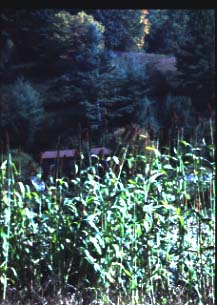
How to Make Molasses

How to Make Molasses
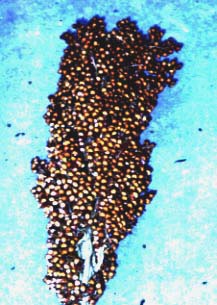 Sorghum Seeds
Sorghum Seeds
May 10th or 15th is the best time to plant the sorghum
seeds. The sorghum seeds can be saved from the previous years crop. The
best place to plant the seeds that results in the best molasses is in red
clay. You want to make sure you fertilize and keep the weeds out after
planting until October. October is the perfect month to harvest the crop.
A good test is to check the sorghum seeds. If they are dark brown and ready
to fall off it is time.

You want to cut the stalks off 5 or 6 inches from
the ground. Remove the "fathers" ( according to the old timers, fathers
are the blades.)

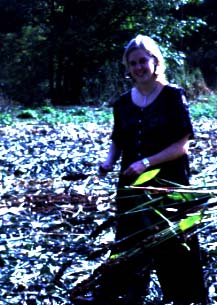
The next step is to remove the sorghum seeds
by cutting them at a slant with a knife. After cutting the stalks, Fred
Bunton, a local Appalachian resident, stands up the cane and leaves it
for a week. He says this makes a better molasses. After a week it is ready
to run through the mill.
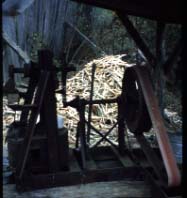
Cane mills use to be run by horses or mules. Today they are usually run by motors. Fred rigged his 1900 mill to a tractor engine. When Fred runs the cane through the mill he uses a sack as a strainer to trap dirt and debris.
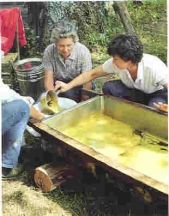 Boiler Pan
Boiler Pan
After the tub is full you transport the sorghum juice
to the six inch deep, thirty inch wide, 6 foot long boiler pan. Fred also
strains the juice again with a new sack into the vat.
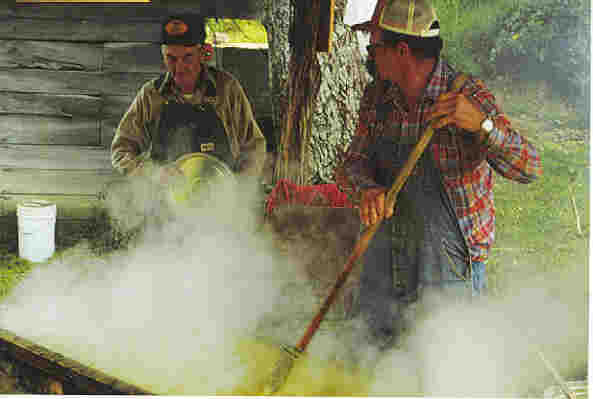
It is now time to boil the sorghum juice into the molasses. The boiler pan sits on top of a furnace. Fred's furnace is made out of concrete blocks. It is basically just a rectangular box surrounding a wood fire. The boiler pan sits on top of the concrete blocks. You want to burn the fire slow and evenly or the molasses will burn. The sorghum juice needs to boil around six hours.

As your boiling you want to keep skimming the green substance found on the top of the sorghum juice with a special strainer made for making molasses.

There are several ways to tell when the molasses is ready;
If the green substance turns yellow, the molasses start to get thick and
thread, and when "frog eyes appear".

You might of guessed frog eyes are bubbles in the thick molasses.
 Straining
Straining
It is now time to take the boiler pan off the furnace
and strain it for a third time into big pots.

It is at this point Mildred Bunton pours the syrup into
mason jars. Mildred says, "You should can it while it is hot so it won't
cool and hardened". When canning you will find that 50 gallons of sorghum
juice only makes 7 gallons of molasses.

The best part of canning the molasses is tasting as you
can. Mildred makes homemade biscuits and everyone who is helping with the
molasses dips the hot, fresh, delicious biscuits into the vat, and samples
the seasons batch.